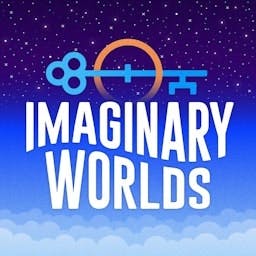Imaginary Worlds
Imaginary Worlds sounds like what would happen if NPR went to ComicCon and decided that’s all they ever wanted to cover. Host Eric Molinsky spent over a decade working as a public radio reporter and producer, and he uses those skills to create thoughtful, sound-rich episodes about science fiction, fantasy, and other genres of speculative fiction. In this award-winning podcast, Eric talks with filmmakers, screenwriters, novelists, comic book artists, game designers, and anyone who works in the field of make-believe about how they craft their worlds. He also talks with academics and fans about why we suspend our disbelief, an...
This Animated Life

As longtime listeners know, I worked in the animation industry before switching careers and going into broadcasting. Today’s episode features a trio of conversations that trace the history of animation in my lifetime, and my life in animation. The interviews come from Between Imaginary Worlds, a chat show that’s available exclusively to listeners who pledge $5 a month or more on Patreon.
Act I: I bond with comic book and children’s book author Judd Winick over the creepy world of 1970s children’s TV – which scared us as kids but makes us oddly nostalgic today.
Act...
Bringing Guillermo del Toro's Frankenstein to Life

When director Guillermo del Toro asked Tamara Deverell to be the production designer on his film adaptation of Frankenstein, she had a good idea of what he wanted. Del Toro had been dreaming of making a Frankenstein movie for years, and she had worked with him on several projects before. She told me they’re so much sync, “I find with Guillermo, it’s not speaking in words, it’s speaking with images.” But that didn’t make the production design any less challenging. We discuss where Tamara looked for inspiration, why it’s important for her to build physical sets...
Creature Double Feature

In honor of the spooky season, we present two monstrous origin stories --Mary Shelley’s Frankenstein and Bram Stoker’s Dracula. We know when these books were written in the 19th century. But what inspired the imaginations of the rebellious teenager Mary Shelley, or the beleaguered theatrical promoter Bram Stoker? I talk with biographer Charlotte Gordon and Professors Gillen D'Arcy Wood and Ron Broglio about how “The Year Without a Summer” may have sparked storms in Mary Shelley’s mind. And I talk with UC Davis professor Louis Warren about why he believes an American entertainer was the unlikely model for...
Music of a Forbidden Planet

In the 1950s, the avant-garde music scene in New York and the movie studios of Los Angeles might have seemed like opposite ends of a cultural spectrum. But they came together (and blew apart) when MGM hired Louis and Bebe Barron to write the score for the sci-fi classic Forbidden Planet. It was the first all-electronic score for a Hollywood film, but not everyone was ready for the future of film music. I talk with Louis’ son David Barron, composer Dorothy Moskowitz, University of Chicago associate professor Jennifer Iverson, and broadcaster and writer John Cavanagh about how the Barrons bu...
The Battle to Make Star Wars
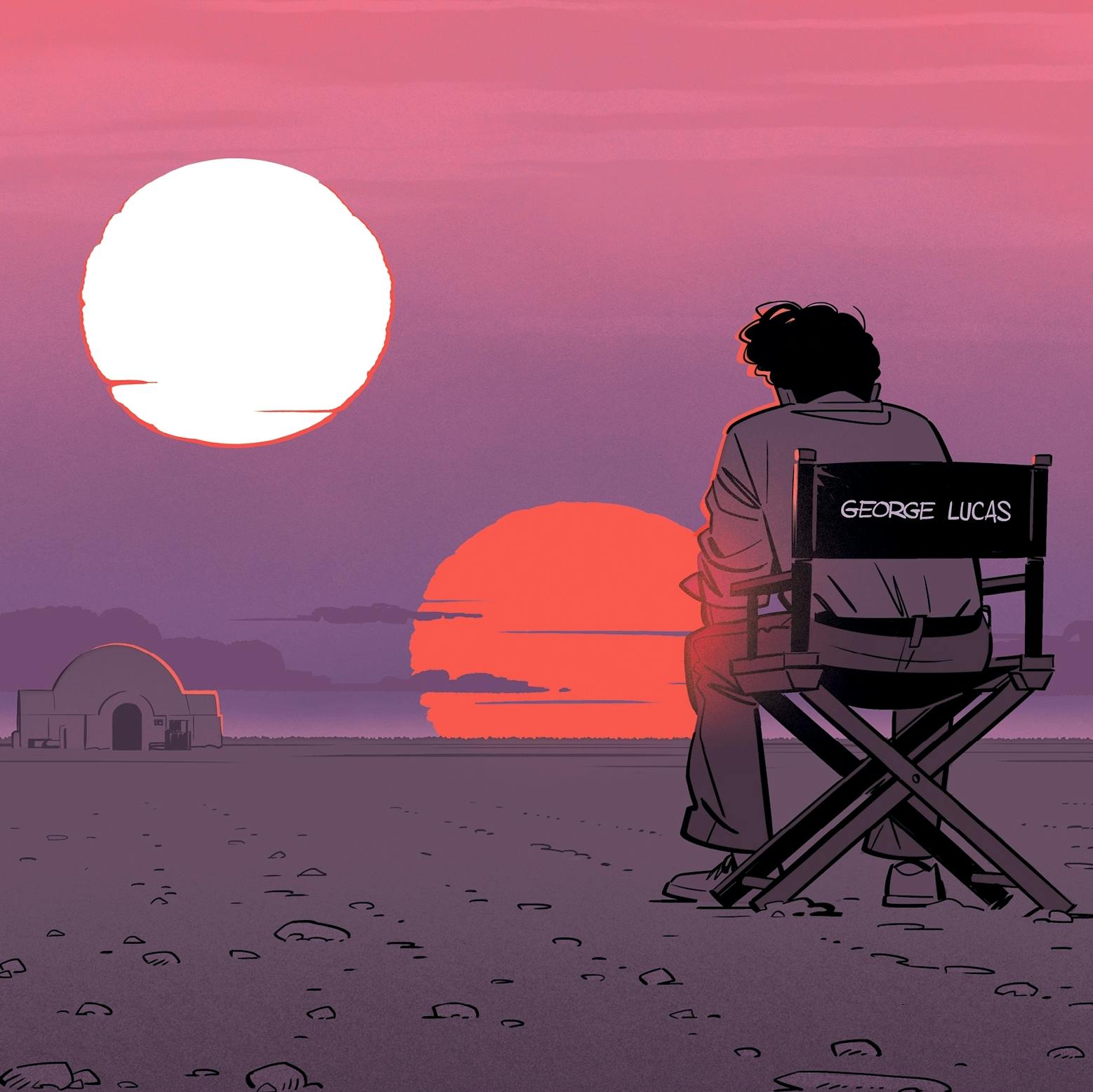
Movies that change cinema often come from outsiders – whether it’s Orson Welles making Citizen Kane or George Lucas making Star Wars a.k.a. Episode IV: A New Hope. The excellent graphic novel Lucas Wars by artist Renaud Roche and writer Laurent Hopman just came out in English (the original French title is Les Guerres de Lucas.) I talk with Renaud and Laurent about why the making of Star Wars was such a long shot, and how the production changed the lives of everyone involved. Plus, we discuss the unsung heroes who helped make Star Wars happen -- like...
Lifting the Curtain on Theatrical Effects

I’ve covered digital and practical effects in film and TV, but creating special effects for live theater is a whole other challenge. J&M Special Effects has been up to the task for 40 years. Their crew has worked on shows from Hadestown to Harry Potter and The Cursed Child to Disney musicals like Frozen and Aladdin. I get a behind-the-scenes tour of their Brooklyn warehouse, where failure is part of the process in figuring out how to make the magic work. I talk with partner and designer Jeremy Chernick, along with pyrotechnician Bohdan Bushell, about how theatrical effects ha...
The Shark That Ate Hollywood

I didn't want the summer to end without joining in on the 50th anniversary celebrations of Jaws. I spent summers on Cape Cod as a kid, where I often heard that Jaws was filmed nearby on Martha's Vineyard. In fact, I recently went back and visited an exhibit on the 50th anniversary of Jaws at the Martha Vineyard Museum. So this week, I'm playing one of my favorite reflections on the 50th anniversary of Jaws -- an episode from the podcast Cautionary Tales. The host Tim Harford dives deep into the famously chaotic filming of Jaws, and he explores...
Dreaming of Coney Island's Dreamland

Coney Island still has the classic amusements you’d expect today like roller coasters, water slides, and carnival games. But over a century ago, it looked more like a proto–Disney World, with multiple theme parks, colossal buildings, and wildly imaginative rides. The most extravagant park along the boardwalk was Dreamland. At Dreamland, you could take a trip to Hell, experience the end of the world, ride through fake Venetian canals, or visit a city built to scale for little people. I talk with historian and novelist Kevin Baker about why Dreamland remains so intriguing and deeply problematic. We also...
8-Bit to Orchestras: Video Game Music Scores

Creating a musical score for interactive video games is like trying to hit a moving target. Luckily, Hans Zimmer’s studio Bleeding Fingers has developed some clever strategies. I talk with their CEO Russell Emanuel and musicians Thom Lukas and Giovanni Rios about how they create innovative scores for games like Arknights, and why they thrive under creative limitations. Grammy-winning video game composer Winifred Phillips discusses how she builds adaptive scores that shift and respond to unpredictable gameplay. And video game historian and RPI professor William Gibbons explains why the technological limitations of ‘80s and ‘90s games actually fueled compos...
How Jack Kirby Made His Mark on Marvel

The production design of the film Fantastic Four: First Steps is an homage to the early ‘60s comics created by Stan Lee and Jack Kirby. While Kirby is best known for his bold, fist-popping drawing style, he was also a great storyteller who redefined what comic books could be. He was appreciated by hardcore fans at the time, but he never got the same media attention as Stan Lee and wasn't compensated for the fortunes his characters made. I talk with Kirby experts Charles Hatfield, Mark Evanier, Randolph Hoppe, and Arlen Schumer about where we can see Jack Kirby's in...
The Hitchhiker's Guide to Douglas Adams
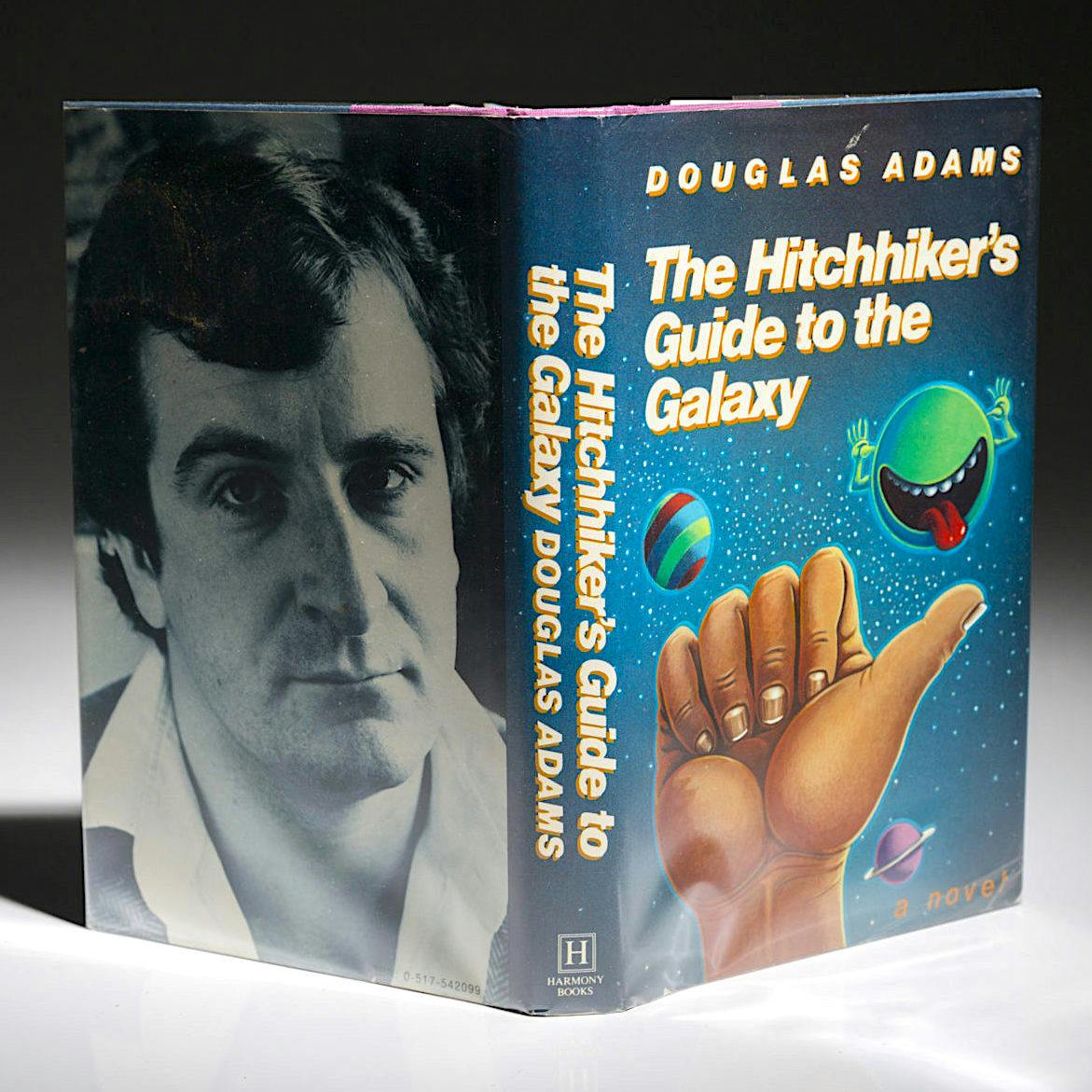
When Arvind Ethan David was a student, he decided to adapt the Douglas Adams novel Dirk Gently’s Holistic Detective Agency into a play. Arvind didn’t imagine that Adams would show up to see the play (which he did), nor that Arvind would grow up to become a caretaker of Adams’ legacy. Arvind just released an audiobook called Douglas Adams: The Ends of The Earth, produced by Pushkin Industries. It features unheard archival audio of Douglas Adams and interviews with friends and colleagues of the late author who ponder what Adams was trying to tell us, and whether the gr...
Imagining the Digital Afterlife

The animated TV series Pantheon (streaming on Netflix) asks what if you could upload your mind to the Internet? Would still be human? Would we create a virtual paradise where everyone got to live forever? Or would we find new and more sophisticated ways to destroy each other? I talk with Pantheon showrunner Craig Silverstein and Ken Liu, the author of The Hidden Girl and Other Stories, which the TV show is based on. We discuss how they adapted a series of loosely interconnected stories into a tightly plotted two-season arc, and all the ways in which society would...
Murderbot Is Ready for Its Close-Up (But Not Eye Contact)
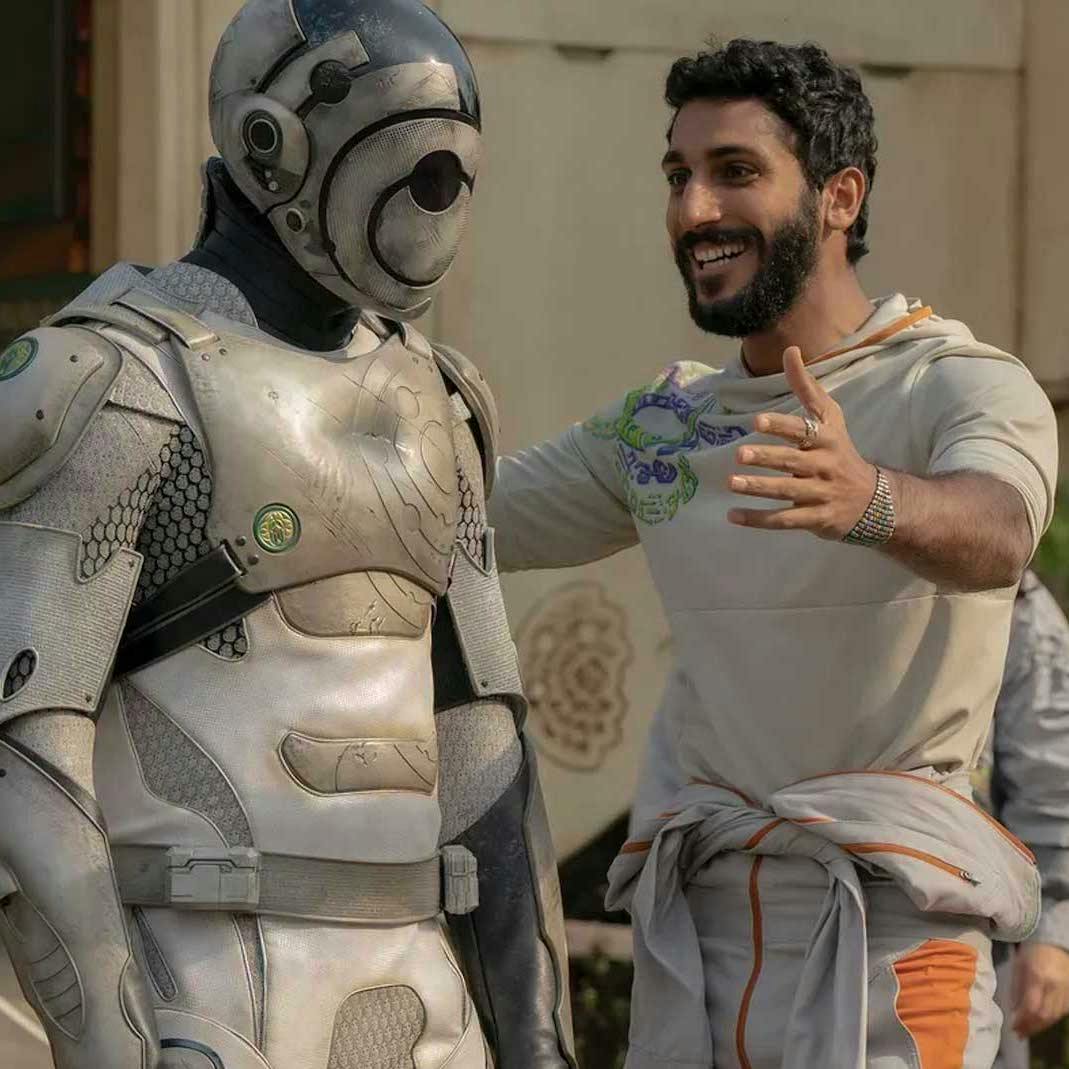
Murderbot is a killing machine in the far future that would rather spend its time binging an intergalactic soap opera. Shooting bad guys with lasers is much less stressful than making eye contact or engaging in small talk with humans. Murderbot is also the main character of Martha Wells’ best-selling series of books, The Murderbot Diaries. The books have been adapted into a fun new show on Apple TV+ starring Alexander Skarsgård. I talk with Martha Wells, and the showrunners Chris and Paul Weitz, about the challenges of adapting the books for television -- from casting choices, to tra...
The Bright Legacy of Dark Shadows
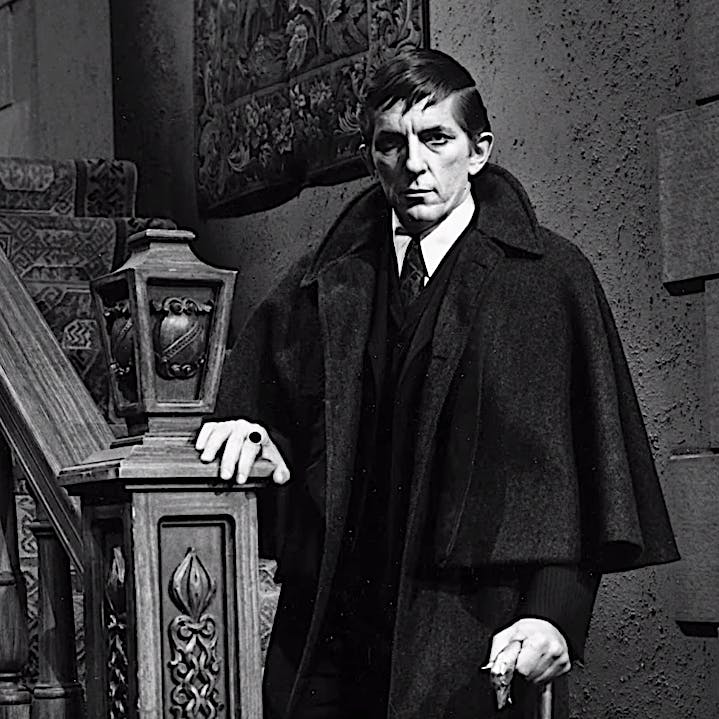
Next year marks the 60th anniversary of Dark Shadows. The gothic soap opera wasn’t originally intended to include a vampire, but when creator Dan Curtis introduced the character of Barnabas Collins in a last-ditch effort to avoid cancellation, he inadvertently launched a cultural phenomenon. As portrayed by actor Jonathan Frid, the character of Barnabas sparked a never-ending debate among horror fans as to whether vampires should be depicted as pure predators or tragic, misunderstood outcasts. I talk with Danielle Gelehrter (host of the podcast Terror at Collinwood) and authors Mark Dawidziak and Jeff Thompson about why the show ha...
Body Horror Gets Under My Skin

We all have that one thing we just can’t watch. For me, it’s body horror -- the kind of horror where grotesque and disturbing things happen to someone’s body, like in The Thing, The Fly, or The Substance. There is a long history of body horror as a form of social commentary and special effects showmanship. I respect the artform, but I can’t stomach the art. So I decided to figure out why. I talk with Chioke l’Anson (horror fan and voice of NPR underwriting), author David Huckvale (“Terrors of The Flesh: The Philosophy of Body Horr...
Bonus: Syd Mead Full Gallery Tour

Last week, we heard about a new exhibit in New York called Syd Mead: Future Pastime. The exhibit closes on May 21st, and I know most listeners won't be able to see it in person. So in this bonus episode, you can hear the entire tour I got from Elon Solo and William Corman, who organized the exhibit. You can also see some of the images on the Imaginary Worlds Instagram and Facebook pages.
Learn more about your ad choices. Visit podcastchoices.com/adchoices
The Optimist Behind Blade Runner's Dystopia

The late Syd Mead was a visual futurist who was hired to imagine the worlds of Blade Runner, Tron, Aliens, Elysium and other sci-fi films. His work in Hollywood has been lauded for decades, but there’s a new exhibit in New York that shows a different side of the artist. Syd Mead: Future Pastime is a collection of his personal and commercial paintings, which are all works of science fiction. Despite his connection to the dystopian world of Blade Runner, Mead’s personal vision of the future was unwaveringly optimistic. I talk with Mead’s husband and business partne...
Blueprints for Utopias

The golden age of sci-fi was filled with utopian visions the future. These days, when sci-fi creators project ahead several decades, the world is looking a lot more dystopian. But there is a group of artists who believe that a better tomorrow is possible if we can imagine it first. Architects are finding that science fiction can be a great way to understand how their buildings will adapt to a rapidly changing world. I talk with architect and Texas Tech professor Jes Deaver about why she thinks sci-fi can inspire her students to not only think outside the literal...
Mary Blair: Coloring Outside the Lines at Disney

In honor of Women’s History Month we’re producing a two-part series about two artists who were visionaries and trailblazers. In part 2, we look at the career of Mary Blair. She changed the way Walt Disney wanted to make animation and brought modernist sophistication to his style. But not everyone at the studio was on board with Walt’s dream to “get Mary in the picture.” I talk with animation historians John Canemaker and Mindy Johnson about the influence of Mary Blair, and how we’ve experienced her work more than we’ve actually seen it. And I talk with auth...
Bonus: Superstar Stuntwoman of Silent Cinema
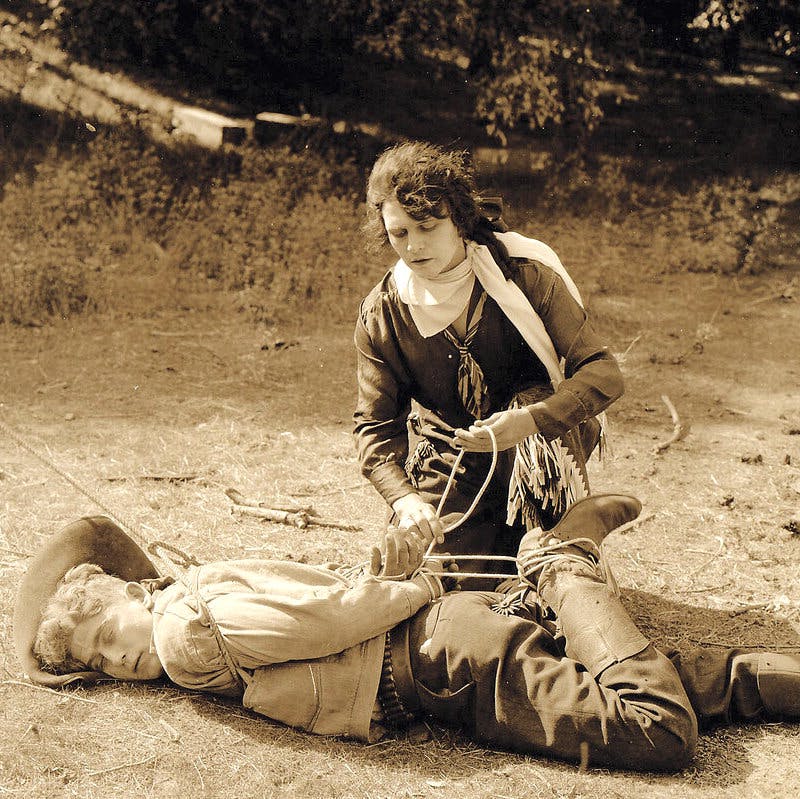
In the previous episode, I talked with author Mallory O'Meara about Milicent Patrick, but there wasn't room to include this bonus material about Mallory's new book, Daughter of Daring. It tells the amazing story of Helen Gibson, the first superstar professional stuntwoman in Hollywood. She was like a combination of Annie Oakley and Michelle Yeoh at a time when silent movie stars were trying to outdo each other in their death-defying stunts.
Learn more about your ad choices. Visit podcastchoices.com/adchoices
Milicent Patrick: Disney Magic to Monster Mayhem
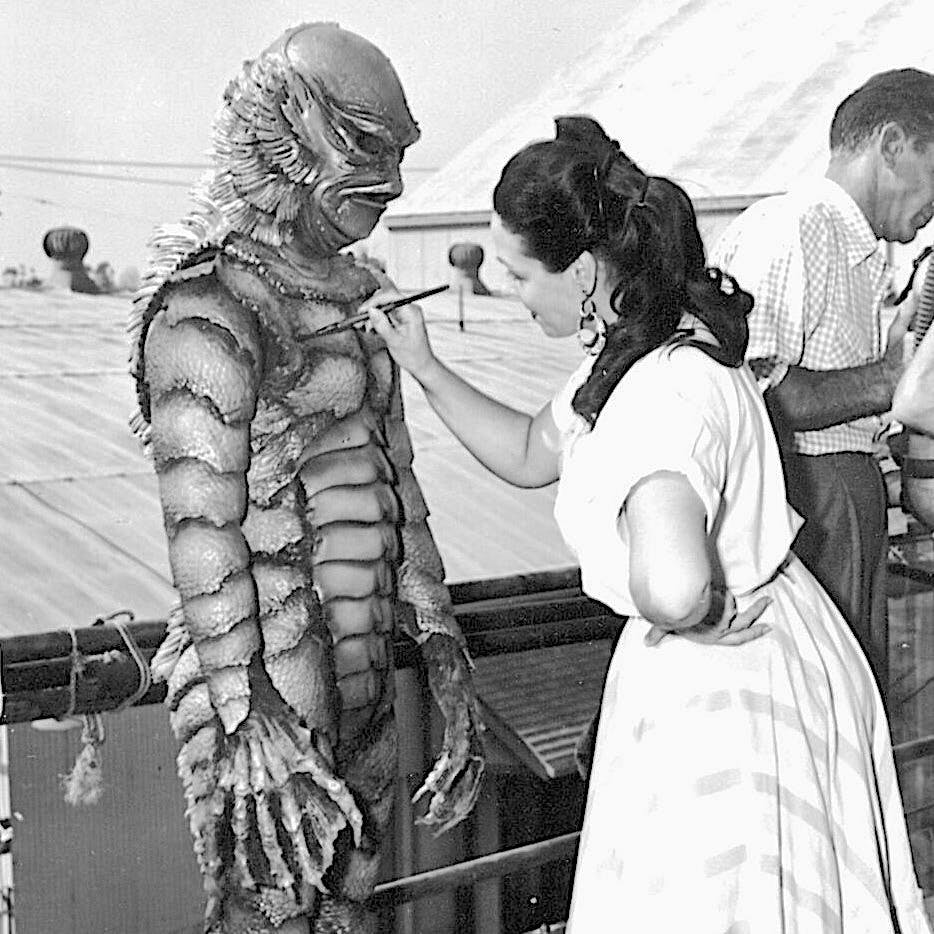
In honor of Women’s History Month, we’re producing a two-part series about two visionary and trailblazing artists: Mary Blair and Milicent Patrick. They went to the same art school. They each began working at Disney during the Depression. They were both singled out for their talents but left in 1941. From there, they went on to have wildly different careers, but each had a lasting impact on pop culture. In part one, I talk with authors and historians Mindy Johnson and Mallory O’Meara about Milicent Patrick. She started as a special effects animator on Fantasia before designing the Gi...
Pokémon and The Art of Dubbing Anime

This week’s episode comes from our Patreon podcast Between Imaginary Worlds. It’s a more casual chat show that appears between ad-free episodes of Imaginary Worlds for listeners who support the show on Patreon. I wanted to play this episode for you because it gives a good sense of the types of conversations we’re having on Between Imaginary Worlds. I talk with the anime voice actress Veronica Taylor about her career dubbing characters in shows like Pokémon, Dragon Ball Z, Sailor Moon, One Piece and Yu-Gi-Oh. We also discuss the differences between working with anime and working...
Filk Fusion: Where Sci-Fi Meets Folk Music

In the 1950s, an article about the popularity of folk music among science fiction fans had a typo where “folk” was written as “filk.” From then on, filk music became a staple at grassroots sci-fi conventions. Filkers would either write parody lyrics to existing folk songs, or they’d invent entirely new speculative worlds in 3-4 minute songs. Filk has evolved beyond just being folk. It's gone electric and embraced other genres of music. But sci-fi fantasy fandom has changed a lot as well. Does filk still have a place in a more corporate fantasy world? Can it survive the compet...
Dance With The Devil Under Wall St.

The writer Jon Ronson and producers of the immersive theatrical experience Sleep No More have teamed up to make a vast new immersive show that unfolds beneath a Wall St. skyscraper. Life And Trust tells the story of J.G. Conwell, a bank president on the eve of the 1929 crash who makes a Faustian bargain to return to his youth. We accompany him back to New York’s seedy and turbulent past of The Gilded Age. The experience of spending hours in the world of Life And Trust is almost indescribable since most of the story unfolds through dream-like se...
Rewriting the Script on Audio Fiction

Lauren Shippen is one of my favorite creators of audio dramas. In 2015, she burst on the scene with The Bright Sessions, which was about young people with supernatural abilities who are in therapy. The show was so successful, she used it to create an audio drama network called Atypical Artists, which produces her work and other indie creators. As a writer, Lauren combines a steady stream of revelations and plot twists with an ability to write deeply human characters that keeps me bingeing. And she’s given herself great roles to play as an actress. I talk with Lauren ab...
The Muppets Before The Muppets

In honor of Muppet*Vision 3D closing at Disney World, we look at the history of The Muppets before Kermit joined Miss Piggy and Fozzie Bear. Two decades earlier, Kermit was hanging out with Sam and Friends -- a local TV show in Washington, D.C., that launched Jim Henson's career. This episode comes from the podcast Sidedoor, produced by The Smithsonian with support from PRX. Their host Lizzie Peabody journeys back to 1955 to figure out how this eccentric cast of puppets built the foundation for everything Jim Henson would do afterwards, from Sesame Street to The Muppet Show...
Bond, Bond, and James Bond: An Audio Drama

There’s a fan theory that James Bond is a codename, and all of the Bond movies are in a single chronological order. In this original audio drama, James Bond is not a film series but rather an MI6 program (or programme) where agents embody the persona of “James Bond” until they retire from the field one way or another. I talk with three characters who served as 007 until their number was up. Their stints as James Bond happened to coincide with the off years for the franchise in the real world. Featuring Pavel Douglas, James Brown and Will de Rez...
Making Up The Penguin

The Penguin series on HBO and Max has been one of the most critically acclaimed comic book-based TV shows in years. Much of the praise has gone towards actors like Colin Farrell, who plays the classic Batman villain. But the makeup and prosthetics designer Mike Marino has been singled out for his innovative and striking design of the main character. Mike sculpted an entire head and body for The Penguin, a.k.a. Oz Cobb, that obscured most of Colin Farrell while also liberating the actor to inhabit a role he might otherwise not have been cast. Mike and...
There's No Place Like Oz

In honor of the release of Wicked, we’re hitching a ride on a tornado to hear three different stories about Oz. We hear how the “rainbow chaser” L. Frank Baum failed at every career he tried until he sat down to write The Wizard of Oz. We learn about Baum’s frenemy W.W. Denslow, who illustrated The Wizard of Oz, and then tried to create a competing franchise. And we learn how the author of the Russian translation of The Wizard of Oz convinced the public (with the help of the Soviet government) that the story was written...
Why The Future is (Doctor) Doom

All Hail Doom! The supreme ruler of Latveria has successfully defeated The Fantastic Four and The Avengers. Marvel Studios is bowing towards his will, casting Robert Downey Jr. as the iconic villain and betting their fortunes on Doctor Doom! But Victor von Doom is more than a classic bad guy. He is one of the most complex characters in Marvel history. I talk with comic book writers Mark Waid, Brian Michael Bendis and Ryan North about the ways they’ve depicted Doctor Doom, from noble intensions gone away to horrific acts of selfishness. And cultural critic Mark Hibbett discusses wh...
Who Gets to Survive: The Final Girls of Horror

Horror movies are best known for their monsters and villains – but there’s another half to the equation. The Final Girls who survive horror films and live to see another sequel have been fueling the genre for half a century. Freddie Krueger met his match in Nancy. Michael Myers can’t outwit Laurie. Ripley is the ultimate survivor of Alien movies. But the trope of the Final Girl has gone through an evolution in recent years. I talk with Robin Means Coleman, University of Virginia professor and author of the book Horror Noire, about the underlying issues of race and ge...
To Seek Out New Life

For a long time, imagining what alien life could look like was mostly the job of science fiction creators. But in recent years, the field of astrobiology has gotten a boost from the discovery of faraway exoplanets with atmospheres which could support life. In trying to imagine what aliens could look like, scientists have found that science fiction is a good jumping off point. Astrobiologist Michael Wong hosts a science of Star Trek podcast called Strange New Worlds, and biologist Mohamed Noor wrote a book called Live Long and Evolve about what Star Trek can teach us about science...
Introducing Between Imaginary Worlds

I'm excited to announce that we're starting a new Patreon-only ad-free show called Between Imaginary Worlds, which is a more casual chat show format. In each episode, I talk with different people about what they're excited about in sci-fi fantasy, what they're looking forward to, pet peeves and a lot more.
Between Imaginary Worlds is available to people pledging $10 a month or more on Patreon. New episodes appear in between regular episodes of the show in the ad-free feed that comes with a Level 3 or Level 4 Patreon subscription. You can also listen to Between...
Escaping Prison with Role-Playing Games

Role-playing games like Dungeons & Dragons and Pathfinder aren’t just played in game shops or living rooms. They’re also very popular in prisons – if the prison officials haven’t banned them. I talk with Joseph Krauter, who is formerly incarcerated, and David Annarelli, who is currently incarcerated, about the role that playing games have had on their mental health, personal development and socializing in prison. Plus, they discuss the ways they’ve had to MacGyver whatever they can find into makeshift gaming materials. Michelle Dillon, a board member at Books to Prisoners in Seattle, and Moira Marquis, founder of Prison...
10th Anniversary Special Part 2

In the second part of our retrospective on how Imaginary Worlds has covered sci-fi and fantasy since September 2014, we look at the world of gaming. I visit the game shop Sip & Play and talk with the owner Jonathan Li. Game designer and cultural consultant James Mendez Hodes returns to discuss the affect Stranger Things and Critical Role have had on the popularity of D&D, and why the last decade has been a golden age of indie tabletop games. Illinois Tech professors Carly Kocurek and Jennifer deWinter discuss the breakout video games in the last 10 years, and why it’s...
10th Anniversary Special Part 1

When I began my podcast in September 2014, I was mostly sticking with topics that I was familiar with like blockbuster movies and animation. I liked science fiction, but I was not as familiar with traditional fantasy, literature, tabletop games, and most anime. My understanding of the depth and breadth of imaginary worlds kept expanding, and when I thought I had reached the borders of the universe, I kept discovering more. This show has also become a historical archive of the development of sci-fi fantasy genres since 2014. I talk with journalist Rob Salkowitz and editor Diana M. Pho about how...
Unlocking the Door Between Escape Rooms and Immersive Theater

I used to think escape rooms were gimmicky activities where everyone scrambled to solve puzzles while I stood around feeling useless. On the other hand, I love immersive theater, where an interactive play unfolds as you walk through a space. I thought they were very different types of live entertainment. Not anymore. I talk with David and Lisa Spira from the site Escape Room Artist and podcast Reality Escape Pod about how escape rooms are becoming emotionally resonant, sophisticated theatrical works. We go through the haunted escape room Ghost Light at MyssTic Rooms, and I talk with their co-founder...
Narrating Audiobooks From Other Worlds

The field of audiobooks has exploded since the introduction of mp3 players, and it continues to expand. But it takes a unique set of skills to voice audiobooks in sci-fi and fantasy genres. I talk with audiobook narrators John Pirhalla, Luke Daniels, Amy Landon, and Heath Miller about juggling dozens of voices or accents at the same time, and the kinds of choices they have to make when voicing characters who are not human. We discuss their approach to making dense worldbuilding narration feel like an intimate conversation, and how to voice the game mechanics in Lit RPG books...
Fantasy and Fascism Part II: When Democracy Fails

In the years since my 2020 episode Fantasy and Fascism, I knew that I had to make a follow-up episode. The political landscape was changing in ways I didn’t expect while major sci-fi fantasy franchises were reflecting those anxieties. Last time, I focused on how SFF worlds depicted fascism. This time, I wanted to look at the other half of the equation -- why people lose faith in democracy. I interviewed Trinity College Dublin professor David Kenny about his paper on the lessons we can learn from the collapse of the old Republic in Star Wars. I also talked wi...
The Team Behind Hans Zimmer

Who really composed the scores of Dune, Interstellar, Blade Runner 2049, The Dark Knight, Man of Steel, Pirates of the Caribbean and The Lion King? Were they all written by Hans Zimmer? Or were those scores put together by a team of musicians at Hans Zimmer’s studio Remote Control? The podcast Twenty Thousand Hertz went behind-the-scenes and got a rare glimpse at the creative process of one of the most revered film composers in the world. Plus, I talk with Dallas Taylor, the host of 20K Hertz, about why visiting Hans Zimmer’s studio was almost like a religious expe...
